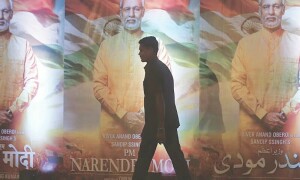
Disguise is a universal response across the natural world. It is adopted as a camouflage for protection against predators, such as in the case of the owl moth, whose wing markings look like the face of an owl to protect it from birds, or cicadas, whose wings look like neem leaves.
Humans, knowingly or unconsciously, adopt disguises. This can be clothing worn specifically for a job interview, or to blend in at social or professional occasions. People function in a society by creating behaviour and language filters.
Rarely do people speak their mind. Depending on whom we are addressing, we tailor our words carefully and adopt social etiquettes suitable for addressing parents and elders, strangers, social acquaintances, courtroom judges or a commanding officer.
In this constant switching of disguises, people become good at hiding their true feelings. A smile can hide pain, extroverted behaviour can hide a shy person, comedians often hide depression and overly aggressive persons can be disguising their vulnerability.
Humans employ various disguises in order to ensure harmony, while art often deals in symbols, metaphors and codes. However, disguises can also be used to deceive
Disguise can also become subterfuge. Spies are trained to blend in with society. Codes, once designed to convey secret messages, have now become more complex, with the new technological advances of steganography — hiding data inside pixels of images, video or audio. In ancient times, messages were tattooed on to a shaved head, allowing the hair to grow again, to be revealed only by re-shaving the head.
The arts have always communicated by the use of symbols and metaphors. Mostly the symbols are easily understood by the viewer, such as the painting of Jehangir with a halo of divinity, standing on a globe with docile lions and lambs resting beneath, depicting the control and harmony in his empire. Even Salim’s adoption of the name Jehangir, conqueror of the world, or Nur Jehan, light of the world, were intended as strong messages of power.
Some are more subtle, such as the salt spilt by Judas in Leonardo Da Vinci’s The Last Supper, a bad omen indicating his impending betrayal of Jesus. Even simple flower paintings in the vanitas tradition, showing both buds and decaying flowers, depict the transience of life.
However, art can also embed hidden messages. The Victorian artist Walter Sickert is said to have hidden clues to the identity of Jack the Ripper in his paintings. After the Battle of Plassey in 1757, when the colonial intentions of the British became clear, protest poetry became heavily disguised to avoid detection. Raja Ram Narain Mauzun wrote, “O gazelle, you are a witness to the death of Majnun. The madman has died. What now will be the fate of the desert?”
Shakespeare’s plays, while highly entertaining, were also a disguised critique of the monarchy, class, gender and racism of his times. One of the most eternally relevant plays is Julius Caesar, which we would recognise today as a regime change play. In modern productions, it has been presented as an army coup, as the intrigues of the White House, and as conspiracy and betrayal in almost every context one can envision.
Doublespeak, a term inspired by George Orwell’s ‘newspeak’ from his 1949 novel 1984, deliberately uses words to deceive, confuse and misdirect people from the truth. Newspeak created misleading words such as ‘ungood’ instead of ‘bad’, much as today doublespeak uses ‘collateral damage’ instead of ‘civilian casualties.’
Mostly associated with politicians and government officials, doublespeak became the main weapon of colonisers, whose best example is the secret Sykes-Picot plan, that simultaneously promised the Arabs independence if they rose up against the Ottomans and the Jews the establishment of the state of Israel, while France and Britain were planning to divide up the Middle East between them.
Today ‘deep fake’ uses facial recognition algorithms to create false images, spread disinformation and create false endorsement of products by famous people.
Repeating a lie until it is seen as the truth and orders given in a way that ensures ‘plausible deniability’ are examples of the purposeful manipulation of language — the ultimate disguise. Native English speakers freely use oxymorons, contradictory terms such as ‘awfully good’, which confuse those new to English. The term ‘charming’ may mean the opposite when it’s a response to uncouth behaviour.
Disguises can be considered necessary for survival, social harmony or wit and entertainment, but when the art of disguise becomes the doctrine of deceit, truth becomes the victim.
Durriya Kazi is a Karachi-based artist.
She may be reached at
durriyakazi1918@gmail.com
Published in Dawn, EOS, April 28th, 2024














































Dear visitor, the comments section is undergoing an overhaul and will return soon.